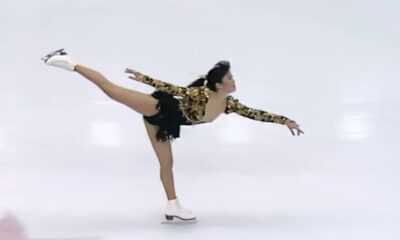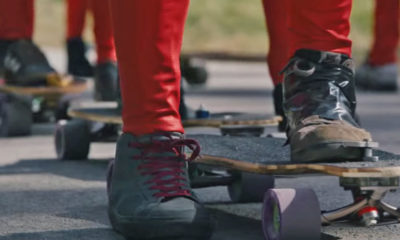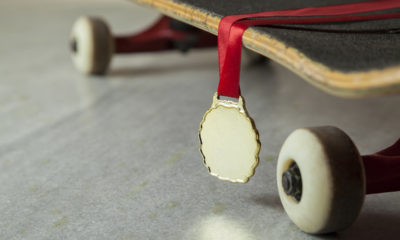
If you are interested in vert skateboarding, you have probably asked yourself, what is vert skating? Here is an explanation of the sport, from the origins to techniques to contests. After reading this, you will have a better understanding of the sport. But before you start skateboarding, it’s essential to know some basics. Luckily, the sport isn’t as difficult as it seems. If you are new to the sport, start by finding a vert ramp, and make sure you wear the appropriate protective gear.
About Vert Skateboarding
The sport of vert skateboarding has its roots in street skating and was adapted by the surfers to the features of urban environments. Vert skateboarding became the new buzzword when skaters started dropping into pools during the California drought. Unlike traditional skateboarding, vert skateboarding involves the use of a vertical surface, such as a halfpipe, quarterpipe, or even a wall. The vert skateboard movement was born out of these urban features and has become a worldwide phenomenon.
To learn to vert skate, you need a vert ramp, a long, vertical ramp, and a sturdy skateboard. You will ride your board up the ramp at high speeds and make impressive jumps, but you will most likely fall. It’s essential to learn how to fall gracefully because you’ll likely land on your knees and slide down the ramp. If you can’t find a vert ramp in your local area, there are several public options that offer this challenging sport.
The Olympic committee is currently working on a proposal to include vert skateboarding in the 2020 Summer Games. This would be a big step for the sport, and would mean huge opportunities for women. There are many reasons why vert could be included in the Olympics. First and foremost, it would allow women to reach their full potential and get recognition as athletes. Second, vert is easy to learn, and even non-skaters can understand the tricks and airs performed by pro skateboarders. The popularity of vert skateboarding has been increasing over the years, and it’s likely that vert will be added to the Olympics.
Vert Skating Origin
The roots of modern skateboarding go back to street skating, which the surfers of the 70s dubbed “sidewalk surfing”. This type of skateboarding made use of the urban environment, including parks and ramps. But vert became a dominant form of skateboarding, taking the sport from obscurity to popularity. In 1976, during the Southern California drought, skaters began dropping into swimming pools to practice their tricks. The resulting rise in vert ramps led to the construction of legitimate quarterpipes and halfpipes across the country. And Hawk’s 900 landing increased the popularity of vert skating to new heights.
Skateboarders learned to adapt to the varying conditions and swung between flat and vertical surfaces. Although these surfaces were rarely perfect, the skateboarders would often roll up a transition on a tile (the tile lining the edge of a swimming pool). With this newfound freedom, vert skating gained new heights. A number of skate parks were closed, and competitions between skaters began to take shape.
Vert skating quickly grew in popularity and became an important part of big competitions. The first vert contests were held in Germany, where it was called the Munster Monster Mastership. Titus kept vert alive at his annual Munster Monster Mastership event, hosting the world championships for a while. Each year, the competition had a large ramp for the vert skaters to use. Its popularity continued to grow in Germany, where it was embraced by more people than ever before.
Vert Skating Techniques
If you are interested in learning how to vert skate, there are a few techniques that you can use. First, you must have a skateboard. Then, you need to be in a vert ramp. When you reach the ramp’s bottom, you should push up the wall with your knees. You can then twist your body in an upwards motion while skating on it. Afterward, you can do various tricks like the axle stall, the fakie, and a bunch of others.
As the popularity of skateboarding increased, more pools were available. In fact, skateboarders began to practice their tricks in these pools. As skateboarders learned to adapt to the conditions of these pools, they conquesting some of the worst ones. Eventually, skateboard parks began to have more ramps, and vert skating was taken to the next level. Despite its early beginnings, it has influenced many other forms of skateboarding.
Street skaters borrowed tricks from other disciplines of skating. In addition, they adapted some tricks to be applied to the ramp. Kickflips, for example, involve kicking the skateboard into a somersault and then snatching it mid-air and landing in a vertical position. These tricks have become staples of the modern vert-contest run. While practicing these tricks is not difficult, finding a public vert ramp is not always possible.
Vert Skateboarding Contests
There are many contests in vert skating. Some skaters compete on single-lane ramps, others take part in multiple-lane competitions. In addition to single-lane ramps, skaters also compete in bowls, which are made of two or three levels of ledges. Modern vert skating is more technical than ever, requiring the use of nearly-perfect ramps. A skater competes by building up a routine of tricks and complementary strings of maneuvers. The ramps at contests are often well-shaped and spacious, allowing skaters to weave their lines effortlessly.
Many skaters began competing in vert skating at skateboard parks, where conditions were often poor. Public ramps were rarely perfect, and skaters often had to ride on the most difficult surfaces to make a statement. These conditions were the beginning of the vertical skating competition. During this time, many skaters learned how to adapt to different surfaces, including pools that were nearly impossible to ride. However, the X Games reversed their decision to remove the men’s vert competition. Sloan has since built a 100-foot wide vert ramp in Vista, California.
The X Games are a cornerstone of ESPN. They are known as “extreme games” and have been broadcast nationally since June 1995. Skateboarding’s evolution has led to an influx of vert skaters throughout the country. Some contests even have television broadcasts on the ESPN or espn2 network. The sport of vert skating has become so popular that it is being seen on television by millions of people.
X Games Vert Skateboarding
During the 2016 Winter X Games in Aspen, Colorado, the world was introduced to stand-alone vert contests, which were held to highlight the next generation of skateboarders. This event included vert skaters like Hawk, Bob Burnquist, Pierre-Luc Gagnon, Andy MacDonald, and Sandro Dias. The competition has grown from humble beginnings in a backyard to an international spectacle that showcases skateboarding’s most advanced forms.
Organizers at the X Games told Hawk they were hosting a best trick competition after the main vert contest. Hawk immediately drove home to get his skateboard and pads, and won the coveted gold. After 18 years, Hawk was finally able to prove his mettle with the 900. Despite the low expectations, the event is set to be the next Olympic sport. A new vert contest is sure to ignite the sport.
The first 1080 trick was performed at the 2003 X Games by Gui Khury, a 12-year-old Brazilian skateboarder. It was the first skater to land the trick on a non-mega vert ramp, making him the youngest gold medalist in X Games history. Gui also broke the Guinness World Record for landing a 1080 on a vertical ramp tile. This is a testament to the growing popularity of the sport.
Modern Vert Skating Ramps
If you’re a skateboarder, you’ve probably heard about modern vert skating ramps. They’re the perfect place to practice a new skill. When skating on a vert ramp, you start by standing on the base of the ramp. As you roll up the ramp wall, you push up with your knees, bending your knees as you go. Once you’ve gotten used to it, you can slide down the ramp to the middle.
Vert skating was originally popularized in the 1970s and reached its golden age during the Tony Hawk era. Today, you can find vertical ramps at skateparks both indoors and outdoors. Indoor skateparks have better quality vert ramps than outdoor ramps. Unlike outdoor ramps, indoor ramps don’t suffer from problems like low lighting. But indoor skateparks tend to be expensive and crowded. Also, finding good indoor vert ramps is a difficult task.
Modern vert skating ramps are essentially large versions of the half-pipe and quarter-pipe. They’re usually complex structures made of wood and metal scaffolding covered in smooth Skatelite sheets. Typically, they consist of three sections: a roll-in section with a 45-degree slope, a gap jump, and a vert quarter-pipe. These are made of wood and metal, and are incredibly durable.

Top Skating News
-


Figure Skating
/ 3 months agoRemembering Sjoukje Dijkstra: The Dutch Skating Legend Who Charmed the World
The world of figure skating has lost one of its brightest stars,
-


Figure Skating
/ 3 months agoThe Enduring Legacy of Kristi Yamaguchi
An Olympic gold medalist, a World Champion, and a beloved public figure.
-


Roller Skating
/ 3 months agoSkating Community Building: Tips for Organizing Local Events
Roller skating isn’t just a hobby; it’s a community. Whether you’re gliding around the...
-


Figure Skating
/ 7 months agoNational Skating Month Celebrating the Skating Community
National Skating Month: A Time for Skaters to Shine
-


-


Inline Skating
/ 7 months agoTips and Techniques for Inline Skating in Extreme Conditions
Tips for Inline Skating in Challenging Weather











